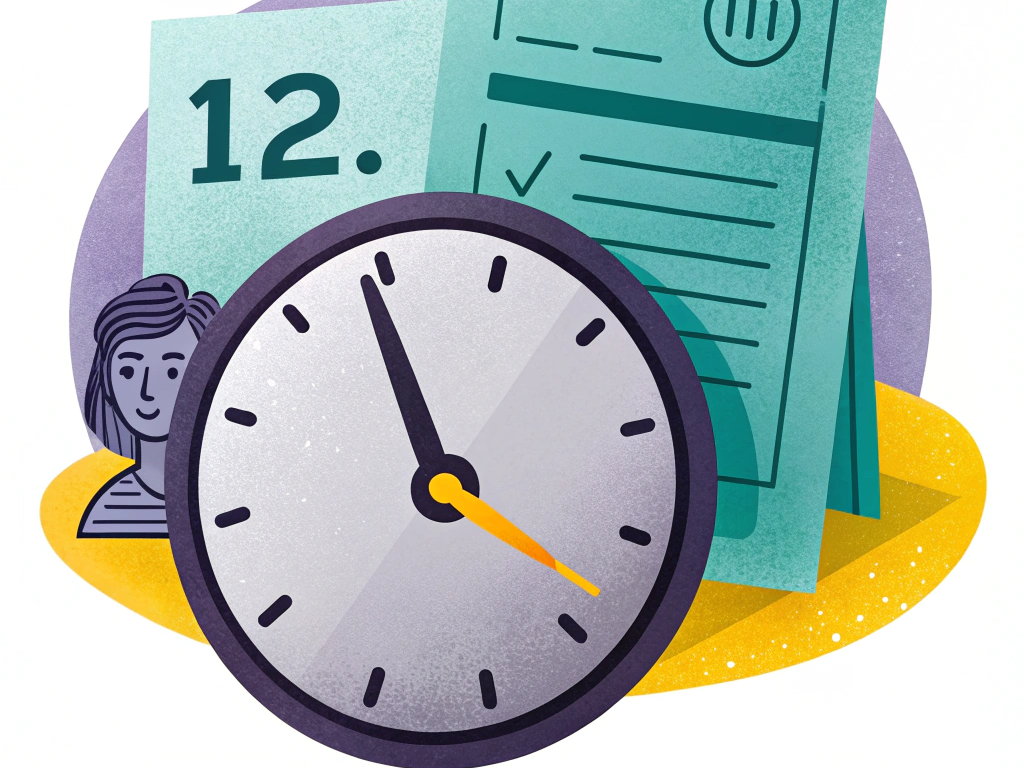Ever prepaid for a year’s worth of Netflix, only to forget about it until months later? Businesses do the same thing—except with way less binge-watching and more number crunching. When companies pay for goods or services before receiving them, these payments are called prepaid expenses. Think rent or insurance paid in advance—the adult versions of paying upfront for that annual gym membership you swear you’ll use. But why do companies make these prepayments, and why do prepaid expenses cozy up in the current asset section of the balance sheet? Let’s unravel this accounting mystery together. Don’t worry, we’ll make it as painless as possible—no CPA required!
Read about: Is Accumulated Depreciation an Expense?
What Are Prepaid Expenses?
So, what’s the deal with prepaid expenses? Think of them as the business world’s way of paying it forward—literally. A prepaid expense is like buying a year’s worth of coffee in advance because you just can’t function without your daily caffeine fix (we’ve all been there). In accounting terms, it’s when a company pays for goods or services before actually receiving them. These are expenses paid in one accounting period but not recognized until a future period. Mind-bending, right?
Because these prepayments offer future economic benefits—kind of like having season tickets to your favorite sports team—they’re initially recorded as assets on the balance sheet. It’s like having a stash of goodies waiting to be unwrapped. But here’s where the accounting magic happens: as the benefit is consumed over time, the prepaid expense gradually transforms into an expense on the income statement. Ta-da! It’s all thanks to the marvelous matching principle.

The matching principle (no, it’s not a dating app for accountants) dictates that expenses should be recognized in the same period as the revenues they help generate. So, when you prepay for, say, a year’s worth of insurance, you don’t just dump the entire amount into expenses right away. Instead, you spread it out over the year, recognizing a portion each month as you enjoy that sweet, sweet coverage.
To keep track of this metamorphosis, companies make what’s called adjusting journal entries. This fancy term just means you’re moving the used-up portion of the prepaid expense from the balance sheet (where it was lounging as an asset) to the income statement (where it joins the expense party). It’s like updating your Netflix queue—out with the old, in with the new!
Effect of Prepaid Expenses on Financial Statements
Alright, let’s see how these prepaid expenses shake things up on your financial statements. Spoiler alert: it’s a bit like watching a slow-motion magic trick.
At the time of the prepayment, you might think something big happens. But nope! When a company pays for, say, a year’s worth of insurance upfront, it’s simply swapping one asset for another. Cash (a current asset) decreases, and prepaid expenses (also a current asset) increase. It’s like trading your $100 bill for five twenties—you still have $100, just in a different form. Your balance sheet remains balanced, and the income statement doesn’t even bat an eyelash.
But wait—there’s more! Once the period the prepayment covers kicks in, the real action starts. Suppose you prepaid for rent covering January to December 2023. As each month passes—say, when January bids us adieu—you recognize that portion of the prepaid rent as an expense. It’s like peeling off calendar pages and watching your prepaid asset shrink while your expenses grow.
This process reduces your prepaid expenses (asset) on the balance sheet and increases your rent expense on the income statement. It’s the accounting equivalent of watching your stash of cookies disappear as you nibble away—delightful yet bittersweet.
Are Prepaid Expenses in the Income Statement?
Short answer: nope! Prepaid expenses are like that friend who promises to show up but is always “on their way”—they’re not making an appearance on your income statement just yet. Why? Because the income statement is all about the here and now—expenses that have already been incurred. Prepaid expenses, on the other hand, are payments for goods or services you’ll enjoy in the future. They’re the accounting world’s version of “see you soon!”
So, instead of crashing the income statement party, prepaid expenses chill on the balance sheet, keeping company with other current assets. They’ll make their grand debut on the income statement when they’re actually incurred. Patience is a virtue, even in accounting!
Read about: Is Accounts Receivable a Current Asset?
Why Prepaid Expenses Appear in the Current Asset Section of the Balance Sheet
So, what’s the big deal? Why do prepaid expenses get to rub shoulders with cash and accounts receivable in the current assets section? Well, let’s break it down.
Assets are like your company’s treasure chest—they bring value either now or in the future. This value could ease operations, reduce expenses, or boost revenue. Assets come in two flavors: current and non-current.
Current assets are the all-stars that you expect to convert into cash or use up within one year. They’re the sprinters of the asset world—quick and agile. Think cash, accounts receivable, inventory, and yes, our friend prepaid expenses.
Prepaid expenses land in the current assets section because they’re like a ticking clock—they’ll provide benefits within 12 months or less. When a company prepays for insurance, rent, or other services, it’s essentially securing future benefits that’ll be realized within the year. It’s like buying 8 yoga sessions in advance—you’ve got something valuable in hand, promising next week you’ll start training.
So, prepaid expenses nestle comfortably among current assets on the balance sheet, ready to strut their stuff as they transform into expenses over time.

Read about: Notes Payable: Asset or Liability?
Common Prepaid Expenses
Now that we’ve cracked the code on prepaid expenses, let’s meet the usual suspects you might find lurking in your balance sheet:
- Prepaid Rent
- Prepaid Insurance
- Prepaid Utilities
- Prepaid Lease Equipment
Prepaid Rent
Ah, rent—the gift that keeps on taking. But sometimes, businesses decide to prepay their rent, shelling out cash before they even set foot in the door. This prepaid rent is the amount paid ahead of the rental period. Depending on the lease agreement, it could cover a month, a quarter, or even a whole year (because who doesn’t love paying upfront?).
When a business pays rent in advance, it records the payment as prepaid rent, an asset. As time marches on and the space is actually used, the company makes adjusting journal entries, shifting a portion from prepaid rent to rent expense. It’s like watching your bank account slim down after too many trips to the coffee shop—except with more spreadsheets and fewer lattes.
Where Does Prepaid Rent Go on a Balance Sheet?
Prepaid rent cozies up in the current assets section of the balance sheet, right alongside cash and other short-term assets. It’s basically VIP seating in the accounting world.
Since prepaid rent represents a future economic benefit (hello, office space!), it earns its spot as an asset on the balance sheet.
Prepaid Insurance
Insurance—it’s like a safety net made of paper (and maybe broken promises). Whether it’s for your office, equipment, or that gold-plated company car, businesses often prepay for insurance coverage on various assets. This prepaid insurance represents amounts paid in advance to insurance companies for future protection against the unexpected (because who doesn’t love surprises?).
While monthly payments are common, many companies opt to pay semi-annually or annually. When they do, the payment gets recorded as prepaid insurance. As time ticks by and the coverage period unfolds, businesses shift portions from prepaid insurance to insurance expense through adjusting journal entries. It’s like watching your umbrella slowly wear out during a never-ending rainstorm.
Prepaid Utilities
Ever try to run a business without electricity or internet? Yeah, neither have we—sounds like a nightmare. Some companies choose to prepay for utilities like electricity, water, internet, or even that fancy coffee service that keeps everyone caffeinated and (somewhat) agreeable.
These prepaid utilities are payments made in advance for essential services. Just like our other prepaid pals, they start off as assets on the balance sheet. As the lights stay on and the coffee flows, the prepaid amount shrinks, and utility expenses grow. It’s the circle of (business) life.
Prepaid Lease Equipment
Need a fancy piece of machinery but don’t want to sell your soul to buy it? Enter leasing. Companies often lease equipment, making upfront payments to use someone else’s shiny assets. These payments are known as prepaid lease equipment. It’s like renting a car but for your business—without the awkward sales pitches for insurance add-ons.
The key difference between a lease and a purchase? Ownership. With a lease, the equipment isn’t yours to keep (so no doodling your logo on it). At the end of the lease term, the equipment goes back home. In the meantime, the prepaid lease payments sit pretty in the current assets section of the balance sheet. As time passes and companies enjoy the benefits of the equipment, they record adjusting journal entries to shift amounts from prepaid lease equipment to lease expense. It’s like paying for a gym membership—use it or lose it (and maybe feel a little guilty along the way).

Read about: Is Merchandise Inventory an Asset?
Takeaways
- Prepaid expenses are payments made in advance for goods or services to be received in the future. They are recorded as current assets on the balance sheet.
- They appear in the current asset section because they provide economic benefits within 12 months or less—just like cash, inventory, and accounts receivable.
- As the prepaid services or goods are used up, companies make adjusting journal entries to shift amounts from prepaid expenses (asset) to expenses on the income statement.
- This process follows the matching principle, ensuring expenses are recognized in the same period as the revenues they help generate.
- Common prepaid expenses include prepaid rent, prepaid insurance, prepaid utilities, and prepaid lease equipment.
- Understanding how prepaid expenses work can help you better manage your company’s finances and keep your balance sheet and income statement accurate.
